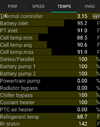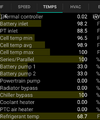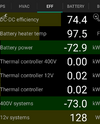Gauss Guzzler
Safety Score = 42
There must be some balance here since charging too fast at low battery temps is not good for the battery as well, but it sure seems like the super-simple logic below is used:
IF (DC_charging AND Battery_temp < active_heating_temp) THEN
heat_pack_100_percent()
ENDIF
Yeah, you're probably right but what difference does it make? Bjorn did the most ridiculous extreme corner case imaginable and still it didn't even make any meaningful difference.
- He took an obsolete car with no octovalve,
- Cold soaked it to arctic temperatures (notice it was -1C *inside* the garage - how cold was the car after being outside?),
- Ran it in track mode out there on the tundra to super-cool the battery,
- Then pulled the ice-covered car into this garage and connected it to the most ridiculous charger anyone has ever attempted to
- Then he failed to mention that cold charging degrades the battery more than warm charging, even if the difference may be much smaller at 15kW.
- And forgot that he had done an entire video about the proportional battery heating that occurs even under *AC* charging as needed to reduce battery degradation, noting that Tesla's reduced cobalt chemistry is even more sensitive to cold charging than most.
- And also forgot that in that very video, he had discovered that even his iPhone refused to charge in order to protect its battery from cold charging damage.
And after all that absurdity what happened? Well, the car used 7kW to heat the battery for the first 33 minutes, "consuming" a total of 4kWh. So yeah, in the most extreme worst-case contrived scenario, you might find that a full charge uses about 5% more energy ($0.40) to prolong the life of your $16,000 battery. Mmmm, gasp.
Tesla has some of the dumbest software developers in the industry (V11), but there's no indication that any of those morons are on the battery team.





